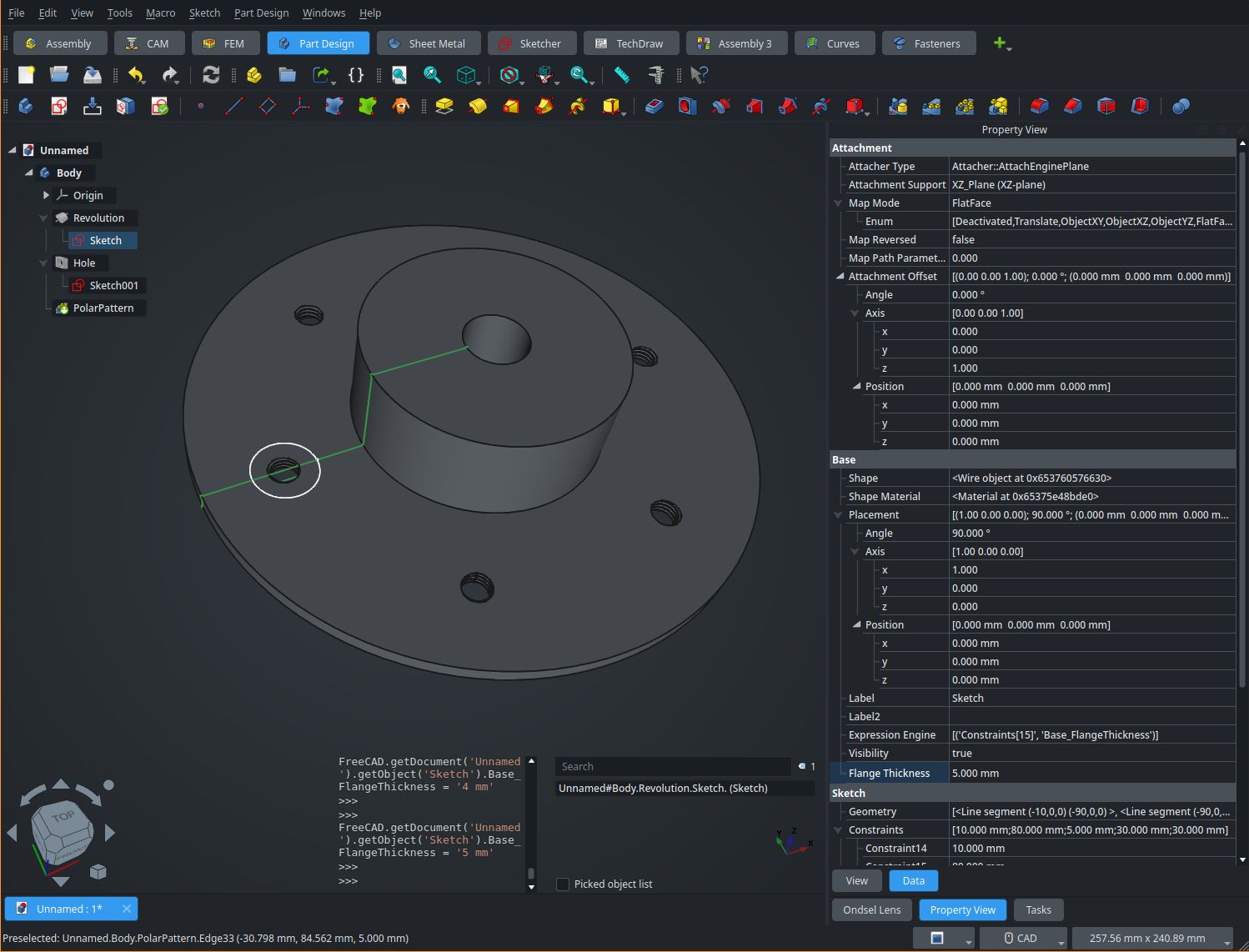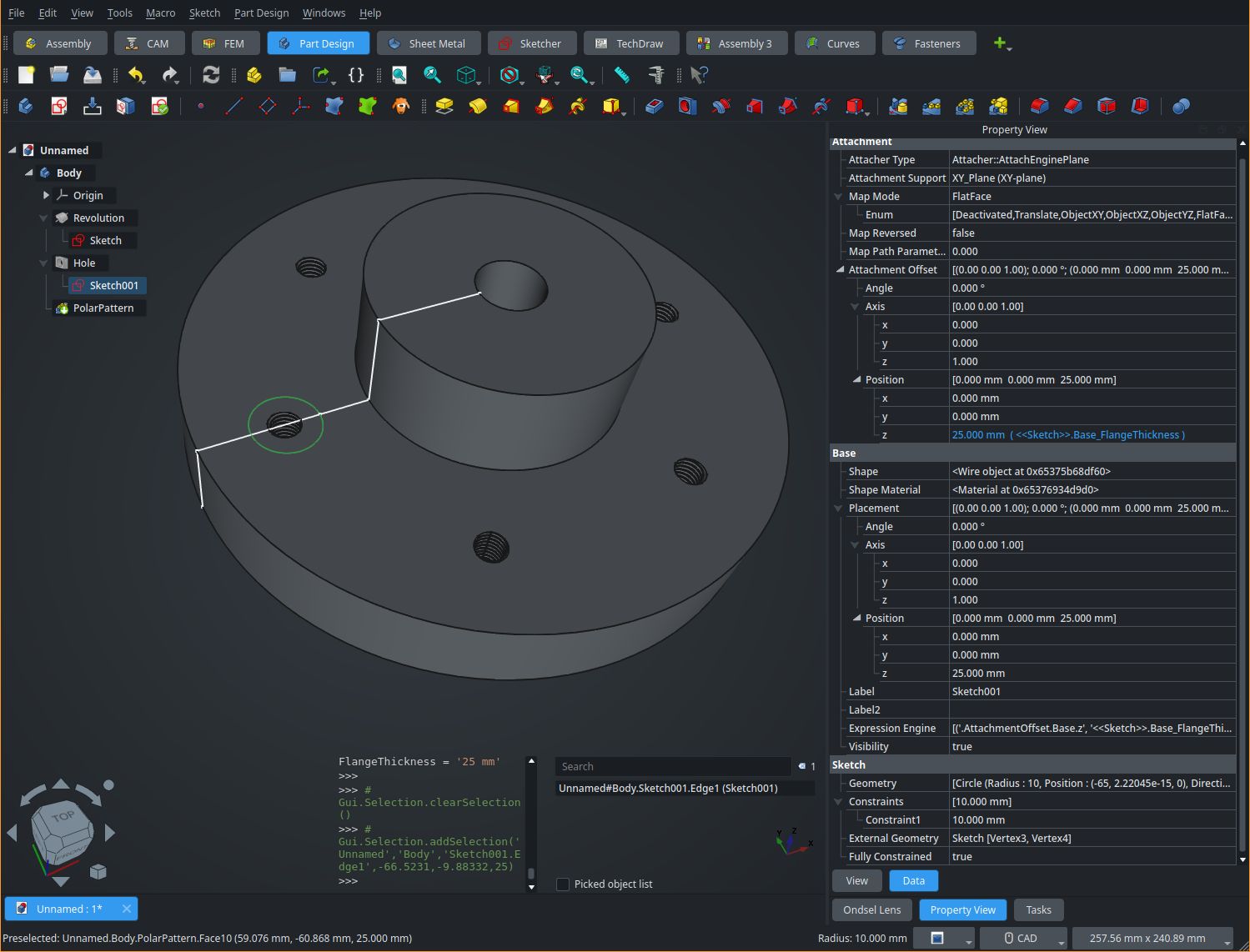The best I have is to be careful to minimize dependencies, and minimize when I change the number of faces an object has, but of course that’s unavoidable sometimes. I don’t buy it that all CAD tools have the same problem or that this is how real professional CAD designers would work, though.
To minimize dependencies for example, instead of drawing the sketch for pad 2 directly on a face of pad 1, I might draw it on the base plane and transform the sketch to line up with pad 1’s face. The main consequence is that I need to manually move pad 2’s sketch if I change the size/position of pad 1. It’s a tradeoff, because I’m giving up some of the benefits of parametric CAD in exchange for easier fix-up.
I agree, mapping a datum plane to a face should have the same topo naming issue as just drawing on the face, so I don’t know why the guide would suggest that. The comment below about mapping datum planes to a simplified skeleton is interesting though.
The good news is that the next release (which sounds imminent) apparently improves it quite a bit.

